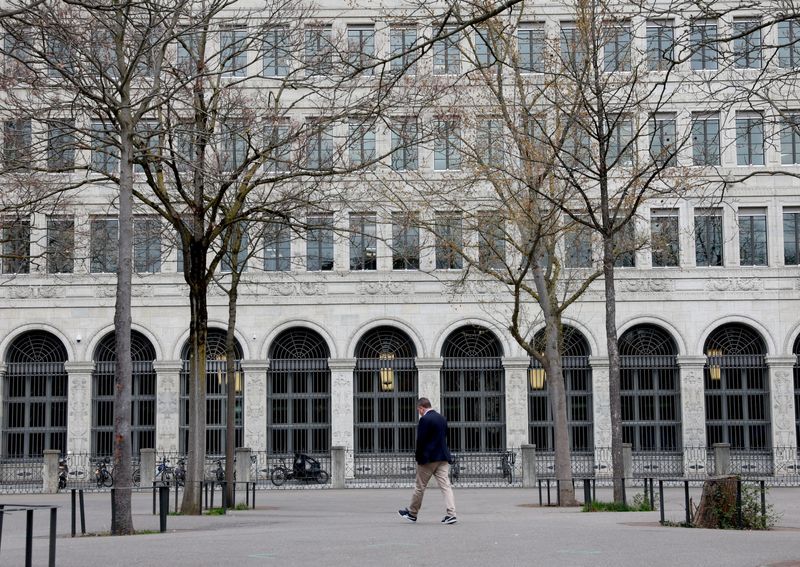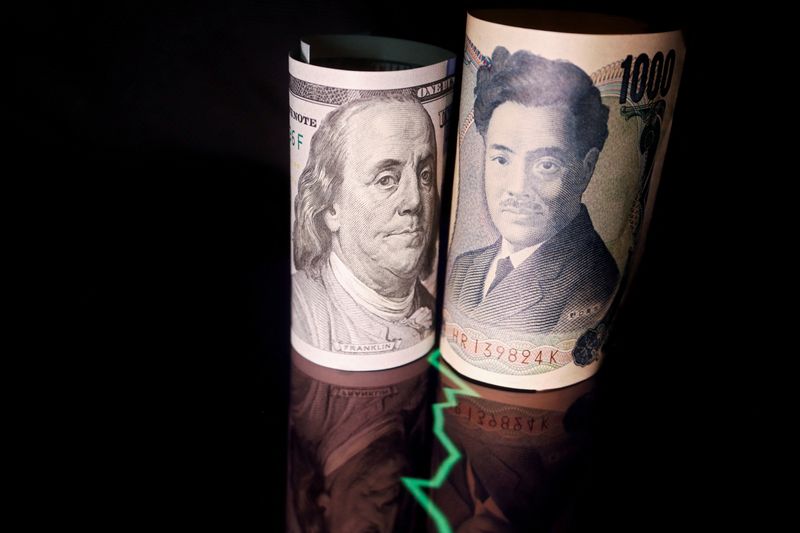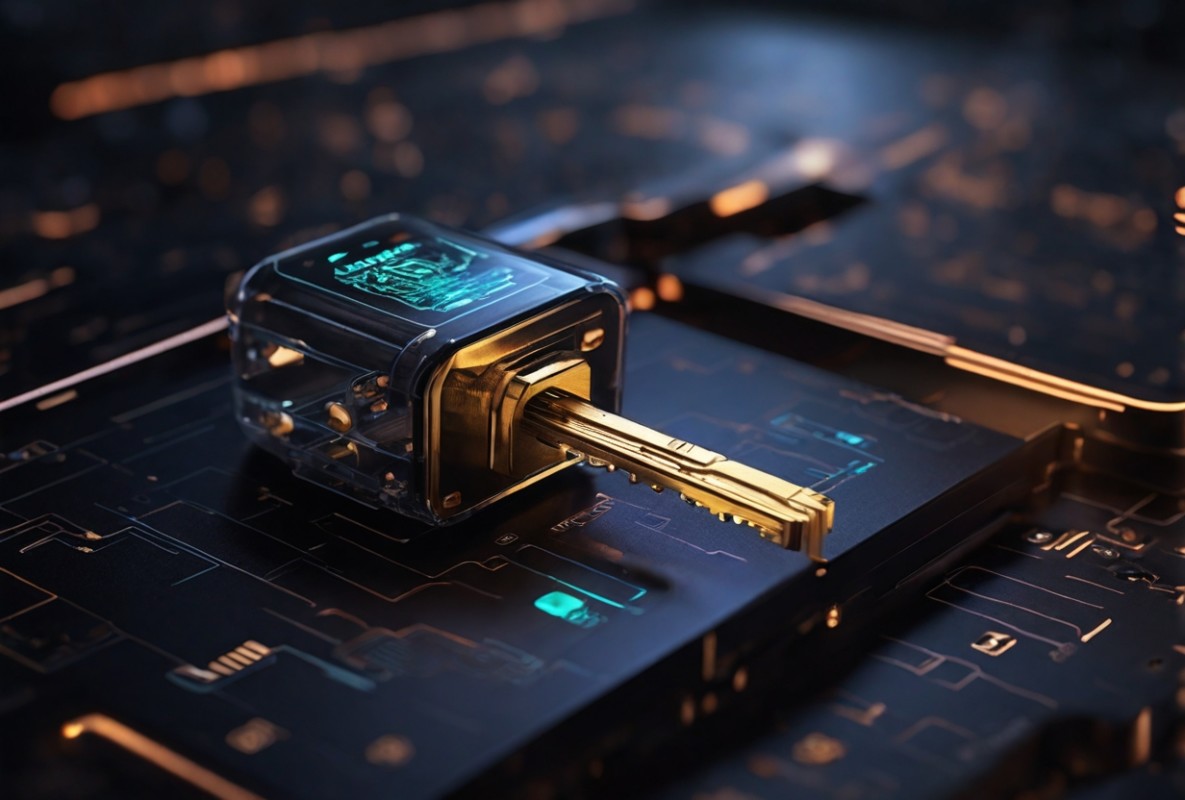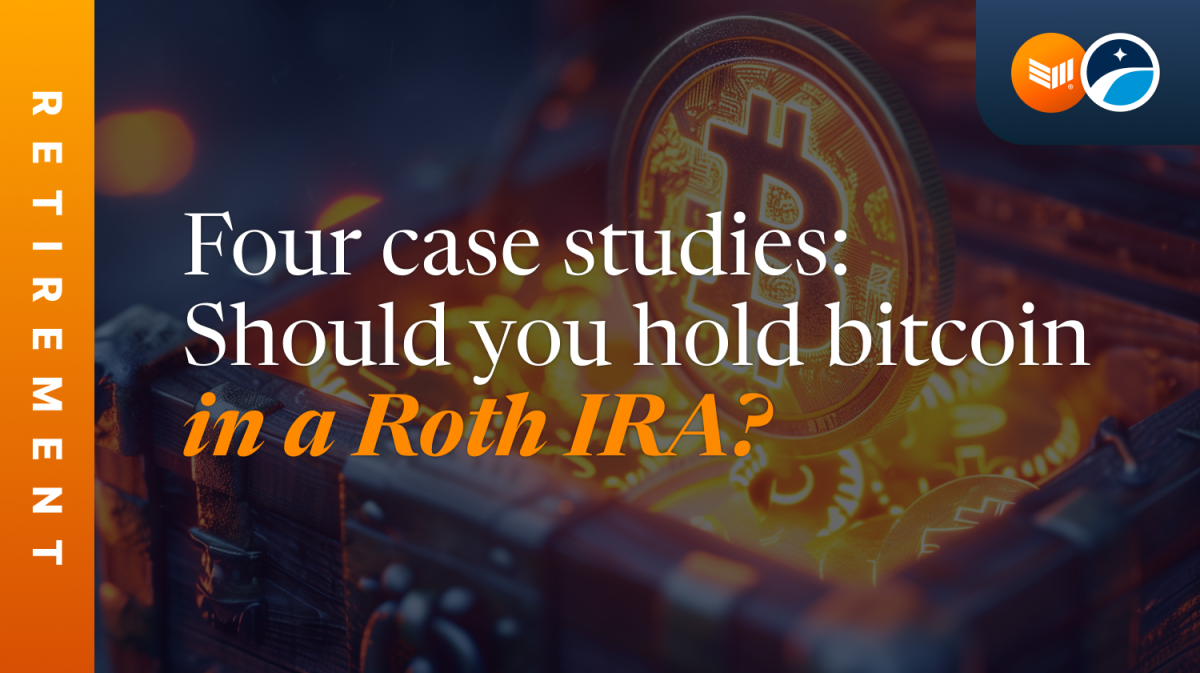Month: March 2024
Swiss National Bank sold forex worth nearly $150 billion in 2023
Post Content
Asia FX falls with Fed meeting on tap; USDJPY tests 150 after BOJ hike
Post Content
Dollar up, yen steady as BOJ policy shift looms
Post Content
El Salvador Moves Bitcoin Reserves to Cold Storage Vault
On March 14, 2024, El Salvador’s president-elect, Nayib Bukele, unveiled a historic bold maneuver that echoed across the Bitcoin world: El Salvador confirmed the transfer of a substantial portion of its Bitcoin holdings into cold storage, securely kept within a vault in its national borders. This strategic decision marks a pivotal juncture in El Salvador’s Bitcoin journey since the introduction of the Bitcoin Law, which has drawn both admiration and skepticism worldwide.
Amidst a cacophony of critiques ranging from allegations of human rights violations to inadequate modern infrastructure, El Salvador has stood committed, weathering storms of disapproval from traditional finance stalwarts and even fervent Bitcoin maximalists on Twitter (X) Spaces. The veil of ambiguity surrounding the size of El Salvador’s Bitcoin reserves, a point of contention and criticism for many, has now been decisively lifted, ushering in a new era of transparency and confidence in the nation’s commitment to fostering a thriving Bitcoin-friendly ecosystem.
With this groundbreaking move, Salvadorans and Bitcoin enthusiasts worldwide have the ability to audit El Salvador’s Bitcoin reserves and can see all inbound and outbound transactions. This audacious step wasn’t mandated but was taken willingly, embodying El Salvador’s commitment to its citizens’ trust and the global Bitcoin community’s ethos of openness. Unsurprisingly, shortly after Bukele announced El Salvador’s Bitcoin address, Bitcoiners began to send donations to the wallet, with nearly 6 Million Sats in transactions as of this writing. To date, plebs can track El Salvador’s daily 1 bitcoin DCA purchases. In this historic moment, El Salvador not only charts a new course in financial governance but also silences its critics by setting a precedent of leading by example in responsibly disclosing and managing its modest but modern sovereign Bitcoin wealth reserves.
With 5,689 Bitcoins—valued at $385,111,456 USD as of this writing—El Salvador has secured its digital wealth and aptly navigated the treacherous waters of international politics. The decision to shift its Bitcoin holdings from Bitgo, an American custodian, to a vault within its sovereign borders wasn’t just a public relations masterstroke; it was a strategic imperative. Given the strained relations between the American government and El Salvador over the Bitcoin Law, the mounting holdings under Bitgo’s custody risked becoming entangled in potential sanctions and regulatory quagmires. This decisive action safeguards El Salvador’s financial autonomy and showcases a shrewd understanding of the intricacies of the American regulatory landscape.
While the disclosure of the reserves has garnered widespread approval, there may have been compelling and strategic reasons behind the nation’s initial reluctance to divulge its complete holdings. Nayib Bukele’s affirmation that only a “big chunk” of the total Bitcoin reserves has been transferred to cold storage underscores a nuanced understanding of the country’s strategic financial management. In the complex realm of nation-states navigating the uncharted waters of a Bitcoin Standard, maintaining a degree of opacity can be a prudent strategy. El Salvador, in its quest to carve a distinct path in the world, has tactically kept some cards close to its chest, waiting for the opportune moment to unveil its Bitcoin wealth in a calculated move. This wise approach reflects a careful balancing act between transparency and strategic advantage in the dynamic landscape of geopolitics.
Bukele shed light on El Salvador’s Bitcoin holdings in earlier tweets, surpassing their earlier acquisition strategies and dollar-cost averaging efforts. Contrary to speculations circulating on social media, Bukele revealed a multifaceted approach that had propelled the nation’s Bitcoin reserves. Beyond mere purchases, El Salvador’s innovative visa program, profits from Bitcoin-to-dollar exchanges held in escrow, revenue from government services, and mining endeavors have collectively contributed to a handsome Bitcoin treasury. This revelation further dispels misconceptions propagated by armchair quarterbacks and highlights El Salvador’s innovative courage in leveraging diverse avenues to bolster its growing Bitcoin wealth.
Disclosing El Salvador’s Bitcoin reserves represents a significant stride toward transparency and accountability for its citizens. Yet, it’s crucial to recognize that there will always be a segment of critics who demand more and complain about every detail in an attempt to find fault. However, it’s essential to remember that these measures are not solely aimed at appeasing detractors. Instead, they serve as a foundational step in creating a positive business environment where Bitcoiners can confidently establish their ventures, knowing that the country is dedicated to their success.
The ultimate goal for Bukele and El Salvador extends beyond merely silencing critics; it’s about transforming the nation into a prosperous hub of opportunity for Salvadorans. In a stroke of genius, El Salvador has built its own digital Fort Knox, with the exceptional feature that citizens can verify the existence of the funds. The Salvadoran government aims to nurture a culture of trust and investment in the country’s future by rewarding proof-of-work and low-time preference. This vision encompasses building a new El Salvador where citizens can thrive, seize opportunities at home, and contribute to the nation’s growth, rather than seeking elusive promises abroad. As El Salvador continues its journey toward economic empowerment and progress, these strategic moves serve as foundational pillars for a brighter and more prosperous future.
This is a guest post by Jaime Garcia. Opinions expressed are entirely their own and do not necessarily reflect those of BTC Inc or Bitcoin Magazine.
$150,000: Standard Chartered Bank Raises Bitcoin Price Forecast for 2024
Global banking giant Standard Chartered has upped its bitcoin price prediction for the end of 2024 to $150,000, a significant increase from its previous forecast of $100,000.
In a new report, Standard Chartered analysts cited strong inflows into recently launched spot bitcoin ETFs in the U.S. as a primary driver of their bullish outlook. The bank believes these “sticky” institutional flows will continue propelling Bitcoin’s price.
Standard Chartered has emerged as one of the more Bitcoin-friendly legacy banks, with an active research team covering Bitcoin. Previously, the bank’s analysts had predicted Bitcoin would reach $100,000 by the end of 2024.
But with Bitcoin’s strong performance in early 2024, the team is now forecasting that it will hit $150,000 within the next nine months.
Standard Chartered Bank analysts led by Geoffrey Kendrick wrote: “For 2024, given the sharper-than-expected price gains year-to-date, we now see potential for the price to reach the $150,000 level by year-end, up from our previous estimate of $100,000.”
They expect the rally to continue into 2025, with Bitcoin potentially trading as high as $250,000 next year before settling around $200,000.
The updated price prediction comes as spot bitcoin ETFs got approved in the US earlier this year. Standard Chartered believes these regulated investment vehicles are bringing significant institutional demand.
Combined with Bitcoin’s fixed supply and other positive fundamentals, the bank sees room for substantial additional upside. Based on increasing mainstream adoption, Standard Chartered expects new highs.
Their bold call illustrates a growing willingness among major financial institutions to make ambitious bitcoin price forecasts. If achieved, a climb to $150,000 would mark a 120% gain from current levels near $68,000. For Standard Chartered, bitcoin’s status as “digital gold” continues to strengthen.
Mercury Layer’s Lightning Latch Swap Protocol
Commerceblock has released a new atomic swap protocol for use with statechains on their Mercury Layer protocol. The HSM server has introduced functionality to support atomically swapping two statechains, as well as enforcing an atomic exchange of a statechain for a Lightning payment. This is the first example of concretely defined and built interactions between statechains and the Lightning Network. Synergy between both protocols has been postulated since the concept of a statechain was originally proposed by Ruben Somsen, specifically as a way to solve the limitation of having to transfer a whole statechain UTXO at once.
Basic Statechain Swaps
In order to support the new swap protocols, the HSM server needs to add some new fields to its database entries tracking each statechain it is facilitating. To facilitate the statechain to statechain swap, the server needs to track:
Batch_id: a value to associate statechains being swapped in a group.Batch-time: a time that starts a counter after which the statechains can be “reclaimed” if the swap fails.Locked: a value indicating whether or not the statechain is locked and restricted from regular transfers.
This allows the HSM server to track and enforce all the variables necessary to ensure a safe atomic swap. When initiating a swap, users have to communicate with each other directly in order to establish a shared batch_id between them. From this point they trade all the necessary information required to facilitate a normal statechain transfer, and send that information plus the batch_id and batch-time to the server. They essentially start the regular transfer process, but also attach the variables to connect the individual statechains as participating in a swap together and how long the timeout period is for that.
The server at this point will apply a lock to every statechain using the same batch_id in the transfer process. Until the timeout expires, or all of the statechains in its database using the same batch_id have been unlocked by the current owners, the server will not approve any transfers. A neat thing about the way the HSM enforces the swap logic is that it doesn’t matter who contacts the server first. When the server gets a message using a batch_id, it checks every statechain in its database and if there is a pre-existing batch-time for that batch_id it sets it as the same. This ensures that no matter who registers the swap first they all use the same time value for the timeout function.
Each client involved in the swap at this point checks for and downloads the messages that initiated the transfer protocol, and upon verifying they’re correct sends a message to the server to unlock their statechain, removing the transfer restrictions. Whenever anyone attempts to finalize a transfer on the receiver side of any of the statechains involved in the swap, the server checks to make sure all of the statechains with the same batch_id are unlocked. If even a single one with the related batch_id is still locked the server will finalize a transfer for none of them. If a swap doesn’t succeed before the timeout, the server will continue restricting the finalization of the swap transfer, but will let the current owners initialize a new transfer to themselves to effectively cancel the swap.
Lightning Latch
The Lightning Latch functionality, swapping a statechain for a Lightning payment, works very similarly to the statechain to statechain swap. Here are the new fields the server must track for the Lightning swap:
Batch_id: a value to associate statechains being swapped in a group.Batch-time: a time that starts a counter after which the statechains can be “reclaimed” if the swap fails.Pre-image: the preimage of the Lightning payment, which is generated by the HSM server.Locked_1 and locked_2: there are two lock fields for the Lightning swap, one authorized by each user involved.
Just like with the statechain to statechain swap, the users establish and share a random batch_id. The current statechain owner then messages the server with the batch_id and statechain involved and requests it generates a hashlock preimage for a Lightning payment. This user then generates a Lightning invoice using this preimage, and the second user contacts the server to confirm it generated the preimage. The current statechain owner then begins the statechain transfer process and uploads the transfer message to the server.
After confirmation of that, the second user trying to swap for the statechain initiates the Lightning payment. At this time the server is the only one with the preimage, so the statechain owner cannot finalize the payment yet. The current owner after verifying the pending Lighting payment sends the server an unlock message to remove the first lock on the statechain. The receiver finally verifies the transfer message, and if valid messages the server to remove their lock as well.
Now with both locks removed, the HSM server will release the preimage to the current statechain owner to finalize the Lightning payment, and will finalize the statechain transfer to the receiver.
This scheme does require trusting the statechain operator to function honestly, but that is fundamentally not a change to the pre-existing trust model of using a statechain in general. At no time does the operator have control over users’ funds, nor do they learn anything about the Lightning payment details.
What Is This Good For?
This scheme is a far cry from the originally posited interaction between statechains and Lightning channels, stacking one on top of the other, but even as a simple starting point this presents functional utility for existing Lightning users. Rebalancing channels is a necessary thing for many nodes, if the capacity is entirely pushed to one side or the other the utility of that channel is limited for routing payments. Many businesses and users have started experimenting with using Liquid as a mechanism for this due to on-chain fees rising and making swaps into and out of the Lightning Network more expensive.
Statechains offer an alternative mechanism to a federated sidechain to alleviate some of the fee expenses associated with channel balance management. Instead of having to swap out to the mainchain directly, or use a sidechain, funds can be swapped to a statechain and held there until they are needed for swapping funds back into a channel. Similar savings in fees can be had while still maintaining the ability to unilaterally claim your funds on the mainchain.
Another potential use case (TRIGGER WARNING) would be the possibility of more efficient marketplaces for trading ordinals. Since ordinals are simply an index scheme tracking paths backwards in the transaction history to specific satoshis, they can easily be lifted off-chain onto a statechain. That dynamic in combination with Lightning Latch could allow cheaper and faster off-chain purchases of ordinals. Someone could build a marketplace where they can be sold instantly off-chain over the Lightning Network.
It’s even possible one day if Lightning clients could become aware somehow of which statechain operators specific Lightning nodes trust that Latch could be used to help route payments by passing statechains around between different nodes instead of using conventional Lightning channels.
On the front of pure statechain to statechain transfers, this offers the potential for a message passing layer to recreate coinjoin like system mixing coins off-chain, similar to the original mixing functionality in Commerceblock’s first statechain implementation.
While it is a very simple starting point, Lightning Latch and the statechain swap functionality crack open the first door of statechains integrating into the existing Lightning Network – and other similar layers to come in the future – in a way that lets them all integrate seamlessly and function as a singular network in terms of payment routing and liquidity management. Even while we debate the need for and usefulness of covenants, there is still quite a lot of room to continue building with what we already have.
You can listen to the Commerceblock team explain the logic beyond the protocol here:
Chatting with the Dr @TTrevethan about why to build lightning latch on @mercurylayer #bitcoin #layer2 pic.twitter.com/CKVG9aHTQ6
— Nicholas Gregory (@gregory_nico) March 15, 2024
And for a more technical explanation, here:
Going through the technicals of how lightning latch will work with @TTrevethan on @mercurylayer #bitcoin #layer2 pic.twitter.com/aQIcjh2ukq
— Nicholas Gregory (@gregory_nico) March 16, 2024
Craig Wright’s Long-Running Satoshi Claim, Analyzed and Debunked
The below is an excerpt from a recent edition of Bitcoin Magazine Pro, Bitcoin Magazine’s premium markets newsletter. To be among the first to receive these insights and other on-chain bitcoin market analysis straight to your inbox, subscribe now.
After a lengthy legal dispute, London’s High Court of Justice has formally determined that Australian computer scientist Craig Wright is not Satoshi Nakamoto, the pseudonymous creator of Bitcoin.
One of the great mysteries of the Bitcoin community since its inception has been quite related to the inception itself: who is Satoshi Nakamoto? This pseudonym is all we have to go on for the identity of that developer or developers who created Bitcoin: writing its white paper, mining the Genesis Block, carrying out transactions, and correspondence with persons in the pre-Bitcoin cryptographic community. And yet, when Bitcoin began receiving the tiniest bits of recognition from the broader world, he formally relinquished any authority over Bitcoin as a project and vanished. In the years since, there have been many attempts to determine Satoshi’s identity, but nothing has borne fruit.
However, members of the community have not only tried to unmask Satoshi from an outsider’s perspective. There have additionally been efforts from various people to publicly claim that they, in fact, are the true creators of Bitcoin. A particular standout in this respect has been the software developer Craig Wright, who made this bold statement in 2016 and has faced years of ridicule from prominent members of the Bitcoin community. Although Wright has fought back against his detractors through litigious action, he has faced repeated defeats on this front. Still, the threat of libel suits has been an ongoing specter over media coverage of Wright’s 8-year claim, and many of his actions have gone underreported as a result.
Eventually, this stifling atmosphere led the Cryptocurrency Open Patent Alliance (COPA) to take a bold step in 2021 when it sued him in British courts to obtain a ruling over whether Wright has copyright ownership of Bitcoin’s white paper. This legal battle has not surfaced much in public discourse since this first filing, for understandable reasons, even as British courts ruled against Wright’s Satoshi claims in suits unrelated to COPA. Although settlement options were pitched by Wright’s legal team, ultimately COPA refused all of them, under the logic that such a settlement would require tacitly accepting his claim. If Craig Wright was only a fraud, after all, he would have no power to offer any concessions on the nature of Bitcoin’s ownership. After years of an apparent holding pattern, the trial began in February 2024.
A particularly noteworthy tactic used by Wright’s team “repeatedly” was that, if Wright was not truly Satoshi Nakamoto, then the real Satoshi would have to unmask himself to disprove the claim definitively. More than anything else, this particular claim has unearthed a large volume of interest in Satoshi’s true identity. For example, as the trial was approaching in January 2024, nearly $1 million worth of Bitcoin was transferred into Satoshi’s wallet from an anonymous source, arousing coverage from major media sites that Bitcoin’s creator might reveal himself. The hubbub from this event led to rampant speculation, as image macros began circulating claiming that characters from the two simplified Japanese scripts, katakana and hiragana, would be pronounced as “Satoshi Nakamoto” while resembling the English letters to the name of popular Satoshi candidate Hal Finney.
Even if Bitcoin was created by enthusiasts in the codebreaking and cryptography scene, this claim is somewhat dubious, as it would require mixing and matching two different Japanese scripts in a haphazard manner. For example, the syllable “to” in Satoshi is a different alphabet than the same syllable in Nakamoto, and there seems to be no steady rule for when these two writing systems alternate. Still, Hal Finney has been dead since 2014, which would explain why Satoshi has remained silent as Bitcoin blossomed to the extreme extent it has in the last ten years.
If nothing else, renewed speculation of this nature was a clear sign that the trial had captured Bitcoiners’ collective imagination on the subject. It was a major point of interest then, when multiple early developers and Bitcoin collaborators began submitting private correspondence with Satoshi into the public record to be used as evidence. Adam Back, developer of the 90s “Hashcash” protocol that directly inspired Bitcoin’s mining algorithm, revealed a brief email correspondence initiated by Satoshi where the two discussed Hashcash’s relevance to Bitcoin. Early collaborator Martii “Sirius” Malmi, on the other hand, released a much larger tranche of emails on a broad range of looser topics, totaling 120 pages in all. These emails gave new insight into the personality of Bitcoin’s creator and likely would never have surfaced without the criminal proceedings.
In any event, as soon as the proceedings had concluded, Justice James Mallor cited the “overwhelming evidence” as he made an immediate ruling against Wright’s claims. COPA released some of the evidence against Wright independently, including the particularly damning accusation that Wright has used ChatGPT to forge documents “on an industrial scale.” Their legal team accused Wright of a “massive campaign of dishonesty and forgery” that “stray[ed] into farce,” going so far as to claim that Wright was actively fabricating new documents during the course of the five-week trial. Mallor claimed he would give a more detailed account of his reasons at a later date, but the actual verdict is clear: Craig Wright is not Satoshi, is not the author of the white paper, and did not create Bitcoin or its software.
The importance of this ruling is clear for two main reasons: not only does it prevent Wright from continuing his years-long practice of initiating defamation lawsuits against individuals and media outlets that deny his Satoshi claim, it also prevents him from suing developers on the basis of copyright infringement. This “chilling effect” on active Bitcoin developers is a major reason why COPA decided to take on this battle. If nothing else, a firm legal precedent will make it substantially easier to dismiss similar claims in the future. COPA has filed a purely civil suit against Wright, which is unlikely to lead to any sort of direct monetary reparation and certainly will not result in incarceration. Still, the full written judgment has yet to be released.
Craig Wright’s extended campaign to prove that he is the true Satoshi Nakamoto has turned into one of the long-running features of the Bitcoin space, even as he spent long periods of time under the radar. Around half of Bitcoin’s entire lifespan has included Wright as a figure, resurfacing from time to time to aggressively defend his “reputation and intellectual property” as the true genius behind Bitcoin. It’s anyone’s guess as to how the man, personally, will take this new defeat in his mission. Will he quietly retire from the scene? Will he continue seeking other legal battles on the subject in different jurisdictions? Will the British legal system somehow censure him over this behavior?
It’s unclear whether or not we can definitively close the book on Craig Wright after this defeat. Still, it’s important to consider how the whole affair has sparked interest in Bitcoin’s origins. Bitcoin has grown to an unimaginable degree since Satoshi Nakamoto first disappeared, and the question of his true identity may seem totally sidelined next to the billions of inflows for the new Bitcoin ETFs or other decidedly 2024 market factors. The early days of Bitcoin still clearly hold sway over our community, however, and this trial has created an opportunity for enthusiasts to scrutinize and debate a wealth of new material from Satoshi.
The question, then, is less “who is Satoshi Nakamoto” and more “where did Bitcoin come from”? Understanding Bitcoin’s humble origins is very important for understanding its bright future, after all. Even if the world of Bitcoin has been irrevocably transformed by new acceptance from the financial establishment, there are still fundamentals to remember. Bitcoin will always be decentralized, and it will always be a currency. Our goals are not merely to make speculative investments and gain fiat currency, but to radically upset the world of fiat altogether. As long as we can keep our eye on the ball, there’s no telling how far Bitcoin can progress.
Dollar hands back some gains ahead of Fed meeting; euro marginally up
Post Content
Asia FX muted, dollar steady ahead of Fed, BOJ meetings
Post Content
Four Case Studies: Should You Hold Bitcoin In A Roth IRA?
Whether you’re young, mid-career, or playing the back nine, Roth IRAs can be an important tool for your financial goals. Four case studies below will illustrate how by combining Roth IRAs with bitcoin, you can save for retirement, optimize for your personal tax situation during retirement, and leave your bitcoin for the next generation.
These are hypothetical case studies based on our experiences, not real people. They’re intended to help you better understand how bitcoin Roth IRAs can fit into many types of retirement plans. Hence, they’re for educational purposes—you should discuss all personal situations with a financial, tax, or legal expert.
Sally the super stacker: Saving for retirementRod is retirement ready: Entering retirementLarry wants to leave a legacy: Inheritance“Why Would I?” Wayne: Reasons not to Roth
1. Sally the super stacker: Saving for retirement
Sally is in her early 30s and has fallen down the bitcoin rabbit hole. Sally views bitcoin as the best savings technology given today’s current macroeconomic backdrop and bitcoin’s fixed supply of 21 million and is committed to a disciplined accumulation strategy.
She’s looking for a way to save her hard-earned money without suffering debasement over time. Ultimately, she would like to use her savings for major goals: a dream vacation, a house, starting a family, and maybe retiring someday. But retirement is a distant goal, and she thinks the United States could go through some significant changes before she’s ready to settle down.
Why would she even bother with the fiat-based American retirement system? The rules, limits, penalties, and potential changes aren’t worth it. Just keep your head down and stack sats, right? Not so fast, Sally.
Importance of tax-free growth
Like most bitcoiners, Sally is stacking bitcoin with money that has already been taxed. Her payroll taxes are withheld on payday, and she is paid the remaining U.S. dollars into her bank account. She then sends money to an exchange and purchases bitcoin. This is the typical way most people stack sats—post-tax.
However, just because the bitcoin is purchased post-tax does not mean it won’t be taxed again. Non-retirement bitcoin earnings are taxed as a capital gain when sold. Over her years of stacking, she will need to keep track of her cost basis and deduct that amount from the gross proceeds when selling.
It’s a simple formula: (final trade) minus (what you paid) equals (what you made). What you make is taxed as capital gains.
Enter the Roth IRA
This is where a Roth IRA savings vehicle adds value. If Sally were to contribute to a bitcoin Roth IRA, contributions would still be made post-tax—same as before. But the key difference is that qualified Roth IRA distributions are tax-free. She only pays tax once, not twice.
The potential implications of tax-free bitcoin are massive. If the dollar value of bitcoin exponentially increases as Sally expects, then reducing her potential tax burden becomes increasingly rewarding.
Let’s assume she starts saving $6,000 per year at age 30 until she reaches age 65, and bitcoin grows at 6% annualized (feel free to plug in your own assumptions). At age 65, she will have accumulated $822,330. And if she had to pay an estimated 20% capital gains tax, it would amount to a bill over $117,000.
In this scenario, a Roth IRA saves her more than $117,000. The Roth becomes a vehicle to supercharge future purchasing power without changing her current taxation. Not having to pay tax on future gains has an exponential impact over time.
Get $100 off Unchained IRA and receive 1-year free of Bitcoin Magazine Pro market research ($250 value). Visit unchained.com and enter code “btcmag” at checkout.
Not just retirement: Withdrawing contributions
Four years into maximizing her bitcoin Roth IRA contributions, Sally has contributed $24,000 (four years of $6,000 max) and experienced a rapid increase in bitcoin price—a common experience for many bitcoiners. Let’s assume a hypothetical balance of $100,000. To celebrate and reward herself, she has planned a Miami vacation. However, she can’t decide if she should sell her non-retirement bitcoin and pay gains tax or take it from her retirement account and pay penalties.
With penalty-free access to Roth contributions, Sally can take up to $24,000 (her total contributions) out of her Roth without incurring penalty or tax. In this imaginary scenario, let’s say she ends up pulling $10,000 from the Roth for her Miami vacation.
More ways to maximize a Roth
If Sally meets someone in Miami, she could pull $10,000 more from the Roth for an elopement wedding. And the house with the picket fence? The Roth allows for some flexibility in that, too: Roth IRAs allow for up to $10,000 of earnings to be withdrawn penalty-free if used for a first-time home purchase. With $4,000 of contributions left and an additional $10,000 in earnings for the first-time home purchase, Sally could combine forces with her equally-wise new spouse—who was also contributing to a Roth—and compile $24,000 for a down payment.
After the tax- and penalty-free spending spree has subsided, she and her spouse can continue to regularly contribute again, saving for the next big goal, and ultimately for retirement.
Key takeaways
The Roth account has more flexibility than just saving for the classic age 59 ½ retirement scenario. Tax-free growth is a powerful tool to grow wealth over time and should be strongly considered for any retirement plan. You can pull contributions tax- and penalty-free at any time, and earnings are tax-free at retirement age. Certain conditions even allow you to pull earnings from your Roth without a penalty.
2. Rod is retirement ready: Entering retirement
Rod has been diligently preparing for retirement. He’s mentally there, but financially not ready to take the leap. Still, bitcoin has become an increasingly important position in his portfolio. What started as a hedge (1-2%) has become a core component (+10%). He holds some bitcoin directly but has more exposure through bitcoin-adjacent assets (GBTC, MicroStrategy, mining stocks, etc.).
He’s not ready to go all-in on bitcoin because, although he believes in its importance, the volatility conflicts with his desire for financial stability during retirement. He has worked hard to earn his nest egg and would hate for it to disappear—especially to taxes. Within the next 5-10 years, he will transition out of his career and live off his 401k, investment account, real estate equity/income, and bitcoin. Any social security or pension are just a bonus.
Brackets and buckets
Rod needs to dive into his financial situation and see how his tax brackets will look. What will they look like the Monday morning after he retires? What will they look like after the pension or social security start? What about when the 401k required minimum distributions start at age 72? Knowing where the money is coming from, when it occurs, and how it’s taxed are critical components to retiring—and staying retired.
To make a plan, Rod needs to think about each account type as being in a different “tax bucket”. His taxable assets are taxed upon sale, and his tax-deferred accounts are taxed when he takes income from them. The Roth provides another bucket: tax-free income. If Rod were to add a Roth IRA, he could pull from different buckets depending on the plan and the need.
For example, Rod can pull from the Roth in high tax years and keep his bracket from climbing too quickly. He can pull from taxable or Traditional IRAs in low tax years and accelerate that income at a lower marginal rate. More sophisticated strategies could include conversions, delaying income, gifting taxable assets, etc. The key point: Roth allows for diversification in “tax buckets” to optimize your tax bracket in retirement.
When Rod adds this tax-free bucket to his picture, he decides to fill it with high risk/reward assets like bitcoin. If the growth is tax-free, then it makes sense for it to grow as much as possible. He decides to sell his mining stocks, GBTC, and MSTR and convert that cash into a bitcoin IRA (preferably one where he controls access to the keys).
Key takeaways
What did your bracket look like this year? No, not the March Madness one. The un-fun IRS one. All retirees must consider their expected tax bracket throughout retirement, and tax bracket management is a science and an art. Specifics vary from person to person, but the main concept applies: The more diversified your “tax buckets,” the more flexibility and optionality you will have in any tax environment.
3. Larry wants to leave a legacy: Inheritance
Larry has been enjoying his time with his wife and grandchildren. He had a successful career and profitable investments that have sustained his lifestyle through retirement. Now, he thinks much more about the next generation and the challenges and struggles they will face. He wants to protect those he cares about and leave the world a better place.
At first, bitcoin didn’t make sense to him. He thought it was just another get-rich-quick scheme. But given the state of the world today and institutional financial foolishness taking place, he’s now open to seeing its long-term potential. Larry’s main goal is to leave bitcoin for the kids and grandkids. He thinks it could become meaningful for their future when he’s no longer with them.
Inheritance and estate considerations
When Larry sets up a Roth IRA, he does not ever have to take Required Minimum Distributions from that account. He can leave the assets there to grow tax-free for the long term—perfect for bitcoin. Larry can easily add or modify beneficiaries to that IRA at any time, and beneficiaries will receive the Roth income tax-free upon his passing. He can accomplish his goal of passing bitcoin to his loved ones. (Estate taxes may still apply, Roth IRAs only avoid income tax.)
Converting to a Roth IRA
Larry was already retired when the Roth IRA came out in 1997, so he doesn’t have an existing Roth, and you need earned income to contribute. But even though he can’t add money directly to one, he can consider a Roth conversion.
He can take pre-tax 401k/IRA funds and convert them to Roth, allowing him to pay the tax now and turn it into a tax-free vehicle for future generations. As to whether this is a good idea for your beneficiaries, the math is fairly simple: if you expect your tax rate to be lower than your beneficiaries’ tax rate, then the Roth would make more sense.
Source: When A Roth IRA May Actually Be A Terrible Asset To Inherit (Kitces)
Key takeaways
Larry has optionality. If the math makes sense, he could turn a portion of his portfolio into a bitcoin Roth IRA and leave the asset for future generations. It’s worth noting that holding your own keys in an Unchained IRA requires that you also do proper inheritance planning.
4. “Why Would I?” Wayne: Reasons not to Roth
Wayne is in his peak earning years and making really good money at his fiat job. He lives a simple life enjoying a lot of time outdoors, and expects not to need much income after he retires. He has many hobbies, one of which is mining bitcoin with a few machines from his home. It’s not a large-scale operation, just a hobby, but he would consider mining bitcoin with his retirement account if that were an option. Ultimately, he plans to leave all assets he owns to charities that he cares about.
Brackets and buckets pt. 2
Revisiting the brackets and buckets discussion from above, Wayne’s current income (high bracket) is much greater than his expected future income needs (low bracket). If he were to convert any of his existing retirement assets to Roth, he would be paying a higher rate than if he had just waited to pull it in retirement. From this perspective, it may be wiser to keep the assets in a Traditional pre-tax account and not convert to Roth.
Death and taxes…
You know the saying: nothing is certain in life but death and taxes. If that’s true, we can certainly add “death taxes” to the list. “Death tax” probably wasn’t too popular in opinion research studies, so “estate tax” is the politically correct term these days. In 2022, the estate tax kicks in around $12 million of net worth ($24 million for married couples). Over time, more and more bitcoiners will need to consider this threshold as it becomes relevant to their situation.
As Wayne considers a Roth IRA, he should note Roth IRAs do not avoid the estate tax, only the income tax. Wayne plans to leave all assets to charity. Assets left to qualified non-profit entities would avoid both estate and income tax. In his case, there is no benefit to the Roth over his current structure from a taxation-at-death standpoint. If it goes to charity, it avoids the death tax—a silver lining to say the least.
Mining in a Roth?
Now, let’s re-introduce Wayne’s bitcoin mining hobby. Mining bitcoin within an IRA is technically possible but highly advised against for the average investor. He should be aware of the tax nightmare often involved and consult a tax advisor regarding UBIT (Unrelated Business Income Tax) within IRA accounts. Additionally, if Wayne wants to hold his mined bitcoin without revealing personal information to a financial institution, Roth IRAs simply aren’t an option.
Key takeaways
When considering a financial strategy, no single tool works for every individual’s situation. Factors such as tax bracket, net worth, and charitable intent are all relevant considerations when evaluating a Roth IRA. Mining doesn’t tend to be well-suited for bitcoin IRAs because of UBIT. Due to these factors, a Roth IRA may not be the right route for Wayne.
Upgrade your Bitcoin security and get access to exclusive discounts on Unchained financial services. Visit our website to learn more.
Wrapping up
Hopefully, you’ve seen how versatile, flexible, and impactful the Roth IRA vehicle can be when combined with the best savings technology ever discovered: bitcoin. You’ve seen circumstances that may positively and negatively affect the suitability of a bitcoin Roth IRA for your financial picture.
When considering bitcoin in a Roth IRA, you should always consider who is controlling the keys. There are tangible differences between the many approaches to bitcoin IRAs, and there’s no reason to let an exchange hack or mistake jeopardize your wealth. The Unchained IRA allows you to secure your financial future by holding your own private keys to your bitcoin.
Whether you’re planning for retirement, entering retirement, or planning your inheritance, the Unchained IRA team can help. To learn more, sign up for an upcoming Retirement and Inheritance webinar or enter your email below to sign up for our newsletter.
This article is provided for educational purposes only, and cannot be relied upon as tax or investment advice. Unchained makes no representations regarding the tax consequences or investment suitability of any structure described herein, and all such questions should be directed to a tax or financial advisor of your choice. Jessy Gilger was an Unchained employee at the time this post was written, but he now works for Unchained’s affiliate company, Sound Advisory.
Originally published on Unchained.com.
Unchained Capital is the official US Collaborative Custody partner of Bitcoin Magazine and an integral sponsor of related content published through Bitcoin Magazine. For more information on services offered, custody products, and the relationship between Unchained and Bitcoin Magazine, please visit our website.









